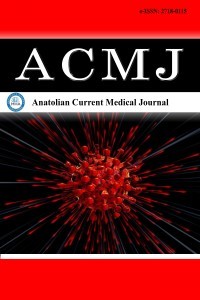1.
Nimmo AF, Absalom AR, Bagshaw O, et al. Guidelines for the safe practice of total intravenous anaesthesia (TIVA): joint guidelines from the association of anaesthetists and the society for intravenous anaesthesia. Anaesthesia. 2019;74(2):211-224. doi:10.1111/anae.14428
2.
Irwin MG, Trinh T, Yao CL. Occupational exposure to anaesthetic gases: a role for TIVA. Expert Opin Drug Saf. 2009;8(4):473-483. doi:10.1517/ 14740330903003778
3.
Shui M, Xue Z, Miao X, Wei C, Wu A. Intravenous versus inhalational maintenance of anesthesia for quality of recovery in adult patients undergoing non-cardiac surgery: a systematic review with meta-analysis and trial sequential analysis. PLoS One. 2021;16(7):e0254271. doi:10.1371/journal.pone.0254271
4.
Anderson BJ, Bagshaw O. Practicalities of total intravenous anesthesia and target-controlled infusion in children. Anesthesiology. 2019;131(1): 164-185. doi:10.1097/ALN.0000000000002657
5.
Mani V, Morton NS. Overview of total intravenous anesthesia in children. Paediatr Anaesth. 2010;20(3):211-222. doi:10.1111/j.1460-9592.2009. 03112.x
6.
Gargiulo DA, Mitchell SJ, Sheridan J, et al. Microbiological contamination of drugs during their administration for anesthesia in the operating room. Anesthesiology. 2016;124(4):785-794. doi:10.1097/ALN.0000000000001041
7.
Marik PE. Propofol: therapeutic indications and side-effects. Curr Pharm Des. 2004;10(29):3639-3649. doi:10.2174/1381612043382846
8.
Jia L, Hou J, Zheng H, et al. Study of the rational dose of propofol in elderly patients under bispectral index monitoring during total intravenous anesthesia: a PRISMA-compliant systematic review. Medicine (Baltimore). 2020;99(5):e19043. doi:10.1097/MD.0000000000019043
9.
Iri R, Unal E. (2024). Bibliometric Analysis of Research (1980-2023). Ahi Evran Üniversitesi Sosyal Bilimler Enstitüsü Dergisi. 2024;10(2):386-403. doi:10.31592/aeusbed.1446738
10.
Yao L, Zhang L, Tai Y, et al. Visual analysis of obesity and hypothyroidism: a bibliometric analysis. Medicine. 2024;103(1):e36841. doi:10.1097/MD.0000000000036841
11.
Kokol P, Blazun Vošner H, Završnik J. Application of bibliometrics in medicine: a historical bibliometrics analysis. Health Info Libr J. 2021; 38(2):125-138. doi:10.1111/hir.12295
12.
Landoni G, Lomivorotov VV, Nigro Neto C, et al. Volatile anesthetics versus total ıntravenous anesthesia for cardiac surgery. N Engl J Med. 2019;380(13):1214-1225. doi:10.1056/NEJMoa1816476
13.
Yap A, Lopez-Olivo MA, Dubowitz J, Hiller J, Riedel B; Global Onco-Anesthesia Research Collaboration Group. Anesthetic technique and cancer outcomes: a meta-analysis of total intravenous versus volatile anesthesia. Can J Anesth. 2019;66(8):1007-1008. doi: 10.1007/s12630-019-01381-0
14.
Wigmore TJ, Mohammed K, Jhanji S. Long-term survival for patients undergoing volatile versus IV anesthesia for cancer surgery: a retrospective analysis.Anesthesiology. 2016;124(1):69-79. doi:10.1097/ALN.0000000000000936
15.
Wu ZF, Lee MS, Wong CS, et al. Propofol-based total intravenous anesthesia is associated with better survival than desflurane anesthesia in colon cancer surgery. Anesthesiology. 2018;129(5):932-941. doi:10. 1097/ALN.0000000000002357
16.
Kataria BK, Ved SA, Nicodemus HF, et al. The pharmacokinetics of propofol in children using three different data analysis approaches.Anesthesiology. 1994;80(1):104-122. doi:10.1097/00000542-199401000-00018
17.
McFarlan CS, Anderson BJ, Short TG. The use of propofol infusions in paediatric anaesthesia: a practical guide.Paediatr Anaesth. 1999;9(3): 209-216. doi:10.1046/j.1460-9592.1999.00364.x
18.
Ozek B, Lu Z, Pouromran F, Radhakrishnan S, Kamarthi S. Analysis of pain research literature through keyword co-occurrence networks.PLOS Digit Health. 2023;2(9):e0000331. doi:10.1371/journal.pdig.0000331
19.
Hao P, Xin R, Li Y, Na X, Lv X. Developmental trends and knowledge frameworks in the application of radiomics in prostate cancer: a bibliometric analysis from 2000 to 2024.Discov Oncol. 2024;15(1):781. doi:10.1007/s12672-024-01678-7
20.
Farhat F, Silva ES, Hassani H, et al. The scholarly footprint of ChatGPT: a bibliometric analysis of the early outbreak phase.Front Artif Intell. 2024;6:1270749. doi:10.3389/frai.2023.1270749
21.
Shiao CC, Wu JT, Chu YC, Tang YH, Huang L, Lai HY. Bibliometric analysis of the top 100 most-cited articles on video laryngoscope from 2011 to 2022.J Chin Med Assoc. 2023;86(10):902-910. doi:10.1097/JCMA. 0000000000000981

